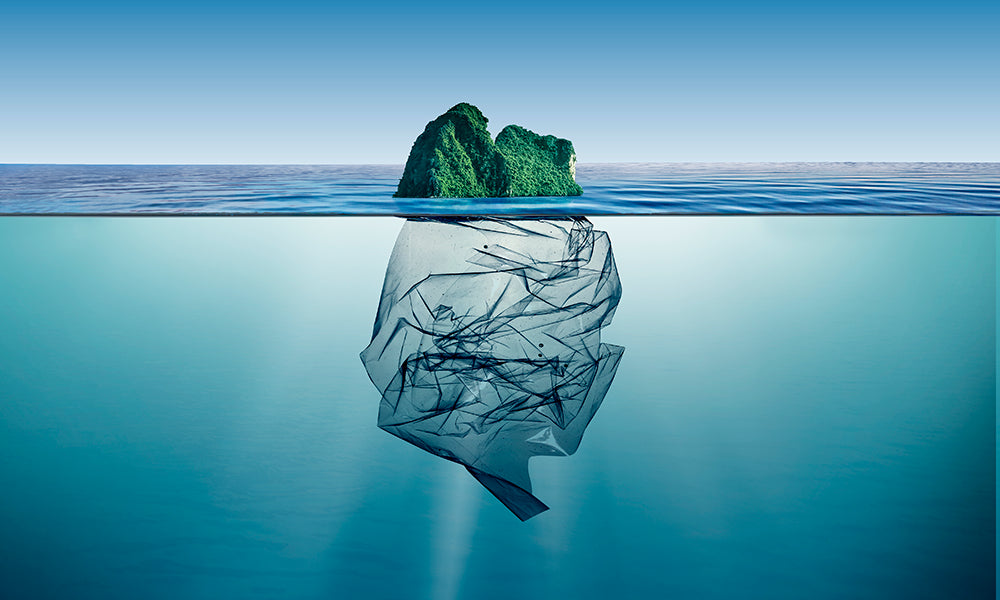Greenwashing Exposed: How to Identify the Real Deal in Eco-Friendly Products.

Greenwashing has been a big buzzword in sustainability lately, but do you know what exactly this term means? Greenwashing is a marketing strategy used by businesses to come across as more eco-friendly than they actually are. An obvious example of this would be plastic packaging where the design is covered in green leaves. Better yet it might feature ambiguous phrases such as “better for the environment” or “sustainable”, without elaborating on how the product achieves these claims. In this scenario, it might be easy to identify that this is a case of greenwashing, however especially in the fashion industry, it might be a little more tricky to spot, since greenwashing is designed to deceive customers who care about the environment. Despite the challenge, we are here to help! Here are some quick questions you can ask yourself to help identify if a company is greenwashing or not.
1. Are they transparent about their supply chain?
Usually, if a business puts in the work to manufacture their products in a sustainable way, they would want to let the customers know about it. On the other hand, if the company seems to be withholding information about how their product was produced, then there’s a big chance that they’re trying to hide the fact that they’re using more resources than necessary. This could be information such as where their materials came from, how they processed the raw material to create the fabric or where was the product made.
A green flag might be if the business can consistently pinpoint what factory their product was made and by who. It shows that they care about the people and environment in which their product was made and make sure to track this information.
If you are unsure whether the lack of information on their website is simply a lack of information or if the company is deliberately hiding that information from you, you can always reach out to them with any questions about their supply chain. Chances are, if they do care about their company’s environmental footprint, they would probably be more than happy to give you a clear and straight-forward answer. If you have nothing to hide, why bother being vague or unresponsive?
2. Does the company use carbon offsetting as their main or only way to be sustainable?
Carbon offsetting is when companies remove greenhouse gases from the atmosphere, in order to balance out the emissions they produce themselves. This might look like investing into projects related to reforestation or renewable energy. Don’t get me wrong, carbon offsetting is great when producing emissions is unavoidable, but it shouldn’t be one of the only ways in which a company operates sustainably.
If the company doesn’t do much about ensuring that the fundamental way in which they operate is as eco-friendly as possible, it gives them an easy way out of actually improving the way they manufacture their products. Truly eco-minded companies should be trying their best to avoid producing unnecessary emissions. They should be incorporating more sustainable practices in the way they manufacture their products, not simply keeping to operate unsustainably because they make up for it through carbon offsetting.
3. Is the product designed to last a long time?
Green-minded companies usually design products to last the customer as long as possible, so as to let the customer consume fewer resources. If you find that for example, a piece of clothing you buy loses its shape after a few washes, the company may not have been intentional with maximising the product’s lifetime.
Other than choosing materials of poor quality, another sign that a company isn’t focused on sustainability is that they keep producing new designs to accommodate trends in fast fashion.
The priority is put on following trends and less on the long-term wearability of the design. By putting out so many different designs, the company is likely compromising the quality of their products to appeal to fashion trends that are constantly evolving, reducing the lifetime of their product.
One sign that the company prioritises how long their customer can use their product for is that they have repair or take-back schemes. It demonstrates that the company values being in the circular economy, where they can extend their product’s longevity for as long as possible, or once their product reaches the end of its life, it can be used in other ways to avoid wastage and ending up in the landfill after a short time.
4. Is the company actually owned by a larger corporation? If so, is being environmentally friendly one of the core values of this corporation?
Overall, big and global corporations tend to mass produce, while local businesses produce according to demand and are more mindful of where their materials come from. Some big brands take advantage of this assumption, and buy up small businesses that have an eco-friendly image. This tactic targets environmentally conscious customers that would have otherwise less likely bought from them, so make sure you don’t fall into this trap!
5. Are they certified by any well-established third-party organisations?
Not enough time to do the research yourself? Check if the company has any green certifications that you recognise. Companies are checked by professionals to see if they meet certain standards, before getting certified by organisations such as B Corporation or the Fairtrade Foundation. If you see these certifications, you can assume a baseline standard for the company’s ethics, which likely means that the company is at least somewhat environmentally conscious. B corporation has a directory of all companies they have certified, which you can find here.
At the end of the day, you should use your own judgement when determining if a company is greenwashing or not. With so much competition due to the popularity of fast fashion nowadays, there is a likelihood that some aspects of a retail business can’t be as sustainable as they want to be simply because it is not economically viable. So naturally, just because a company does not align with any of the points discussed above, doesn’t mean that it isn’t making an effort in moving towards greener practices.
By Sophia Chau, BSc Biological Sciences, Imperial College London



